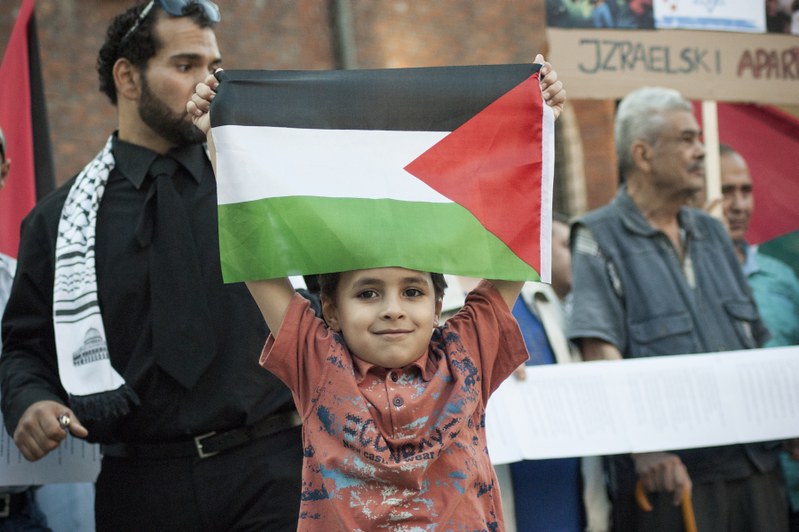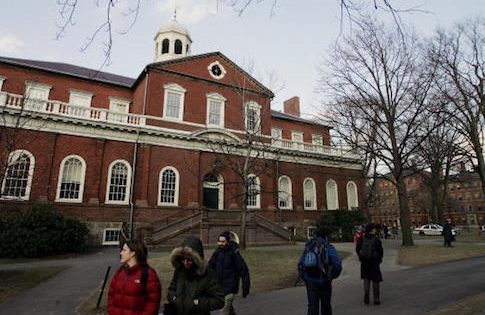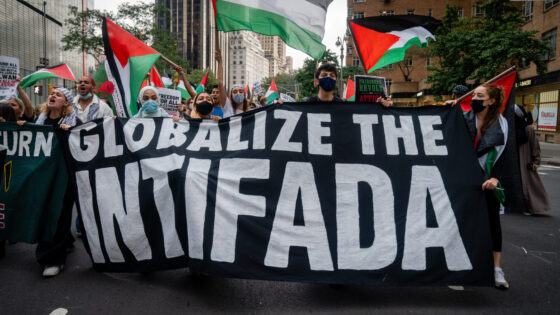Shortly after the start of the organized pro-Palestinian student riots on campuses across the country last fall, the Rutgers University chapter of Students for Justice in Palestine (SJP) issued a set of demands that followed a standard template now evident at multiple universities. In addition to divestment from Israel, incorporating “anti-Palestinian racism“ into all mandatory DEI training and race-based curricula for faculty and staff, and the creation of an Arab Cultural Center, the students demanded that Rutgers “hire additional professors specializing in Palestine and settler-colonial studies and institute a department of Middle East studies.” Since then, Rutgers and other universities have caved to the demands of the mob.
Middle East and Islamic studies centers became avenues for foreign governments to purchase influence and prestige a long time ago. But today, these centers play a much broader role in national politics, law, scholarship, and culture. And the drivers are no longer just foreign political actors, but increasingly domestic ones, too.
In this context, student activists’ apparently spontaneous demands to establish more Middle East studies departments, to hire more Palestinian and Middle East faculty, and to integrate Palestine into DEI and ethnic and race-based curricula should be viewed instead as the intentional expansion and consolidation of leftist institutional power. This has meant the creation of jobs and patronage for a new phalanx of progressive sectarian foot soldiers under the umbrella of ethnic studies. Many of these programs aim to create a reserve of activists who cover a wide array of ethnic and identity grievances and causes that extend beyond the halls of academia, with recruitment beginning in grade school. From a young age, an increasing number of American students are being fed anti-Western and anti-Israel material funded and distributed by a constellation of dark money, left-wing groups and foreign governments. Worse, their success to date can largely be attributed to backing, financial and otherwise, from our own federal government.
Throughout their history, these centers have taken money from both the federal government and foreign governments. For instance, archived documents retrieved by the National Association of Scholars show that Georgetown’s Center for Contemporary Arab Studies (CCAS) relied heavily on foreign countries in its early days during the 1970s. Arab countries contributed two-thirds of the funding needed to help Georgetown leaders reach their $6.1 million fundraising goal for CCAS. During this same time, the foreign governments of Oman, Libya, and the United Arab Emirates (UAE) contributed more than $1 million for various professorships at CCAS. Today, the center is one of about a dozen Middle East National Resource Centers (NRC) that receive more than $3 million in funding from the federal government. Harvard University’s Center for Middle East Studies started in the 1950s with funding from the Ford and Rockefeller foundations and then-American-owned oil company Aramco. Soon thereafter, it received funding from the federal government as an early NRC. Beginning in the 1980s, the center helped secure tens of millions of dollars in funds primarily from Turkey and Saudi Arabia both for its own faculty and for affiliated programs at Harvard.
The original purpose for the centers, established in the 1950s, was to produce policy-relevant information that the government could use to develop sound Middle East foreign policy. Relatively little expertise on the region existed in the United States at the time, which made getting up to speed a national security priority. But it’s hard to see that purpose in what passes through the centers and their affiliated faculty today.
Today, the old foundations have combined with new ones to push for more ideological education on the Middle East not only on college campuses, but also in K-12 education.
While it’s easy to dismiss the centers as too niche or academic to have any real influence, this would be a mistake. For one, these centers have long produced area experts that populate U.S. government agencies and the foreign service. The degeneration of the education provided by these programs into its current activist form tracks with the increasing activism of government bureaucrats, such as the political appointees and staff members of several government agencies who signed a letter objecting to the administration’s Israel policy, and the various State Department officials who have resigned in protest. But the toxic influence extends beyond government bureaucracy. Federally funded Middle East centers produced more than 2,500 instructional materials between 2000 and 2020, of which over 60% were intended for use by K-12 educators. Content matter ranged from climate justice to Islamophobia to youth activism. These centers also conducted over 22,000 outreach programs throughout the same time period, of which over 20% were intended for K-12 educators. Both the instructional materials and outreach programs are part of the centers’ mandate from the federal government, so our taxpayer dollars directly fund these programs.
The University of Texas at Austin’s Center for Middle East Studies, along with other NRCs at the school, used federal funds in 2021 to host a critical race literacy workshop, where K-12 teachers “(Un)learn[ed] patterns of whiteness in literacy teaching.” The university claims on its website that the event supported “instructional goals for literacy standards for the State of Texas.” Or consider a toolkit on “Women and Gender in the Middle East” produced by the University of North Carolina at Chapel Hill’s Center for Middle East and Islamic Studies. Their set of readings directs students to a YouTube video of an overview of Edward Said’s Orientalism, produced by a channel called “Invictapalestina.” For those students who prefer a book, the toolkit points them to an anthology of Arab feminist writing, including by Columbia University professor Lila Abu-Lughod, who, ironically, in the past has criticized the “focus on gender-based violence” in Arab and Islamic countries as it “leave[s] aside the violence of states … like Israel.”
Middle East faculty at top universities train the next generation of anti-Israel and anti-American activists by training K-12 teachers. For instance, New York University’s Hagop Kevorkian Center for Near Eastern Studies partners with Jordan-based nonprofit Global Nomads Group to host an annual fellowship program for grades 7-12 teachers. During the fellowship, teachers create curricula to teach students about the Middle East.
New Utrecht High School teacher Nathan Floro’s curriculum, to take one example, would ensure students have a “basic understanding of orientalism and be able to critique various media through a post-colonial lens.” NYU also funded Newton Public Schools teacher David Bedar, whose fellowship at NYU focused on redeveloping college-level content for high school students on the Israeli-Palestinian conflict. The Committee for Accuracy in Middle East Reporting and Analysis (CAMERA), throughout 2018 and 2019, acquired Bedar’s curriculum materials and found in a detailed analysis that the course favored the Palestinian over the Zionist narrative of the conflict by distorting and omitting facts.
Global Nomads Group offers its own series of “youth courses” promoting similar messages. In a lesson plan within their “Human Rights” course, Global Nomads claims students will learn the difference between equity and equality and why “marginalized people are denied human rights.” They also offer courses on “Art in Action,” “Ocean Health,” and in a twist of irony, “Overcoming Bias.”
On its website, Global Nomads discloses that its Student to World program “is supported by the Stevens Initiative, which is sponsored by the U.S. Department of State, with funding provided by the U.S. Government, and is administered by the Aspen Institute. The Stevens Initiative is also supported by the Bezos Family Foundation and the governments of Morocco and the United Arab Emirates.” Other donors listed on the group’s website include Qatar Foundation International.
In 2021, Yale University’s Council on Middle East Studies hosted a summer conference for New Haven Public Schools teachers where they received free access to films featuring former Women’s March co-chair and antisemitic activist Linda Sarsour, and a list of books, many of which advocate for looser immigration policies. The event primarily featured Palestinian and other Arab speakers and panelists. The one session that featured an official from the American Jewish Committee consisted of a discussion about centering the Mizrahi and Sephardic Jewish experience—in other words, challenging what the Columbia School of Social Work orientation guidebook calls “Ashkenormativity.”
Foreign governments also support these programs, whether directly or indirectly by funding the Middle East centers themselves. Some centers, such as the Saudi-funded King Fahd Center at the University of Arkansas, were started with funding from foreign governments. Others have received periodic funding from foreign governments, such as the United Arab Emirate’s funding to UCLA’s Center for Near Eastern Studies. Still others work in partnership with foreign governments to host teacher workshops. Qatar Foundation International (QFI), the American arm of the Qatar Foundation, is a common collaborator for these programs. QFI funds professional development workshops for Arabic language teachers through Arabic Teacher Councils. The councils are hosted by schools such as George Washington University, Georgia State University, and the University of Chicago.
This same network of organizations funds many of the pro-Palestinian student demonstrators who have taken over elite campuses. George Soros’ Open Society Foundations, Rockefeller Brothers Fund, the Westchester People’s Action Coalition (WESPAC), and the Tides Foundation are just a handful of the organizations that have financially supported the student protests. For instance, the U.S. Campaign for Palestinian Rights has received at least $355,000 from Rockefeller Brothers Fund and $300,000 from Open Society Foundations, according to The New York Post.
U.S. Campaign for Palestinian Rights member Middle East Children’s Alliance (MECA) hosts a project called “Teach Palestine,” where educators disseminate instructional materials and teaching strategies on the Middle East. Teach Palestine is coordinated by two educators affiliated with the Liberated Ethnic Studies initiatives nationally and in California. Between 2017 and 2023, the Open Society Foundations and Rockefeller Brothers Fund cumulatively gave MECA $1.3 million. Teach Palestine includes testimonials from educators who actively teach about the region in their classrooms.
Once students arrive on campus and are exposed to the Israeli-Palestinian conflict in further detail, little is needed to radicalize them.
One teacher goes beyond the third grade curriculum standards by fitting “lessons about the Middle East into the nooks and crannies of our day.” Her description of Israeli history is that it is a “European colony” for the Jewish people that has been continually committing ethnic cleansing since its founding. A librarian brought MECA members to teach children about the “similarities between Israeli and US settler colonialism.” A sixth grade teacher had her students write acrostic poems on settler colonialism as part of a curriculum that focused on “centering Palestinian youth voices” and connected the Palestinian youth experience to Black Lives Matter. She proudly states that “some strong activism and advocacy could come” if students were pushed to the “next level” when engaging in her lesson activities.
The Proteus Fund, which connects “philanthropy with the frontlines of social justice,” is another key player. Since 2016, the Proteus Fund and its lobbying arm Proteus Action League have received $16 million from the Open Society Foundations. Aside from Open Society Foundations, Proteus lists nearly 40 funding partners, which includes the Tides Foundation and Rockefeller Brothers Fund. One of Proteus’ recent initiatives, the RISE Together Fund, claims to oppose intolerance against “Black, African, Arab, Middle Eastern, Muslim, and South Asian (BAMEMSA) communities.” As part of this initiative, they offer organizations immediate and flexible grants through its Rapid Response Fund. Since Oct. 7, Proteus has focused on K-12 advocacy, coordinating legal support, and connecting attorneys with those who have lost educational opportunities due to protests. In the latter half of 2023, Proteus gave a cumulative $700,000 to 35 organizations for flexible spending grants. The beneficiaries of these recent grants include pro-BDS organizations such as the Arab Resource and Organizing Center, Adalah Justice Project, and the Palestinian Youth Movement.
Some of these organizations have been tied to the recent wave of demonstrations among high school students. New York City’s Community Education Council for District 14 partnered with several groups, including the Palestinian Youth Movement, to encourage a 700-student protest. The Arab Resource and Organizing Center hosted walkouts for Berkeley Unified School District (BUSD) students. BUSD teachers covered for protesters by marking these students as legitimately “excused,” even though school policy said otherwise.
Last month, hundreds of NYC school kids staged a pro-Palestinian walkout and protested at the Department of Education in Lower Manhattan. The walkout was organized by Teachers Unite and the Palestine Youth Movement, along with NYC Educators for Palestine, Al-AWDA: The Palestine Right to Return Coalition, Movement of Rank-&-File Educators (MORE), and Desis Rising Up and Moving (DRUM).
Similar movements in New Jersey, Oregon, and elsewhere in the country also involve mushrooming “educators for Palestine” organizations that are contracted to develop curricula and organize student action.
To see how this looks in practice, consider one teacher’s comment at a March QFI-funded Arabic Teachers Council workshop. Attendees were asked how they enact social justice education in their classrooms. The teacher responded:
Instead of asking them [students] “what do you think about this topic,” we talk more about principles and values and structures. Right, like I asked them last week “Do you think we have freedom of expression here at [inaudible] about any social, political, or religious topic?” So, we talk about structures versus the topic itself specifically because some of them are afraid that if they speak specifically about the topic that something might happen.
Later in the workshop, teachers were presented a social justice rubric they could use in classrooms. One of the rubric components assesses how well students produce “insights from social justice theme(s).” Students who want to exceed expectations must demonstrate their understanding of social justice themes by incorporating evidence, such as observing and applying power structures.
This “education” is indistinguishable from so-called protest “toolkits” that “teach Palestine” groups put together for school kids, which is made up of “talking points,” “chants,” and “demands”—that is, material designed to develop “activists” or foot soldiers to be deployed on the streets at will.
Unsurprisingly, the talking points and “demands” grade school kids are taught to recite are identical to those of their college counterparts and mentors, serving the same purpose of recruitment and consolidation of institutional power. In NYC, for instance, the demands were to “Support Palestinian-led curriculum initiatives about Palestinian culture and history. Mandate education about Palestine in history curriculums that centers Palestinian perspectives and experiences. Redirect city funding away from policing and into our public schools, prioritizing low-income Black and Brown communities.”
Once students arrive on campus and are exposed to the Israeli-Palestinian conflict in further detail, little is needed to radicalize them. As an organizer for SJP told The New Yorker in December: “S.J.P. is oriented in a special way. The idea is to appeal to people who know nothing.”
As we deal with the fallout of the anti-Israel protests over the coming months, it will be tempting to look for easy solutions. Perhaps universities can rework their policies to prevent future disruptions. Maybe even some programs can be defunded. But the process that led to this was years-long, requiring the coordination of dozens of organizations and millions of dollars in funding. Undoing it will require reversing the proliferation of sectarian fake disciplines and leftist identitarian studies programs, and replacing activist curricula with fact-based lessons that promote critical thinking—a tall order, to be sure.
Middle East education at all levels needs a complete overhaul. It has gone from an attempt to help inform our geopolitics and augment our security posture against the various threats facing the United States in the region, to a factory of apologists for America’s enemies and advocates on their behalf. Now, they have brought the threat home.





